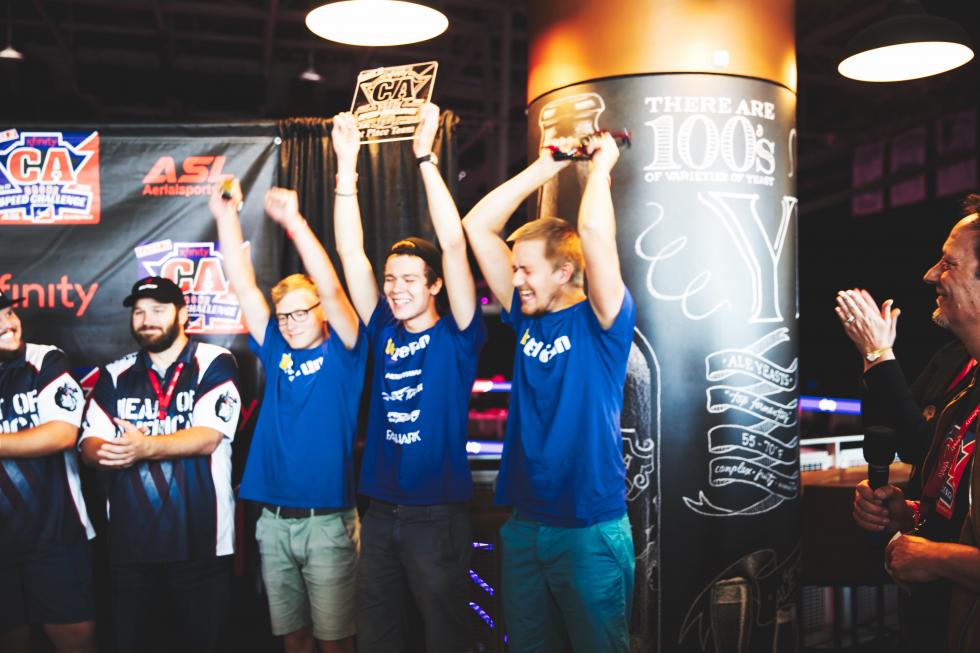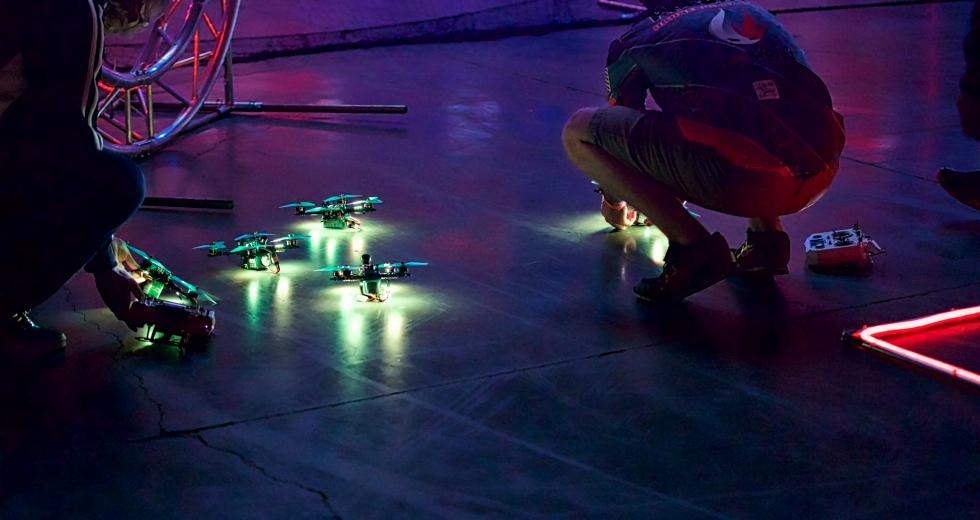Sacramento’s Aaron Jilg is one of the lucky attendees at the biggest drone speed race in California history, featuring competitors from around the globe. He’s still buzzing after the winners are crowned inside the Golden 1 Center, overlooking the futuristic course.
“Today was absurd!” Jilg says, after Team Elefun, featuring members from Norway and Sweden, claim the biggest chunk of the $25,000 pot. “I’ve never seen anything like this [competition]. So fast and so accurate — this could definitely be an X Games sideshow kind of thing. It’s like watching motorsports, but with a lot more technicality.”
Jilg is raving about the second Xfinity California Drone Speed Challenge, held at the Golden 1 Center on July 19 in downtown Sacramento. The race has turned the floor of the Kings’ arena into a glowing high-tech drone obstacle course lined with square, rectangular, and circular gates and barriers. The local arena was chosen for the championship race because it is considered one of the world’s most connected indoor sports and entertainment venues, and is powered by two 100-gigabit ethernet internet circuits from Comcast Business.
The team challenge, which wasn’t open to the general public (the roughly 200 attendees were invited by Comcast, but the event will be televised later this month), featured 24 participants on eight teams from around the world, including Sacramento’s Lance Ulmer, a pilot with Team Baylands.
The Aerial Sports League competition is similar to other professional speed events, with vehicles racing against each other, pit stops, crashes, and frequent oohs and ahhs from onlookers. ASL started in 2014 as a Bay Area club, but has since expanded into an international community of drone sports pilots, claiming over 50,000 social media followers. The ASL is a global community of affiliates producing events in Mexico, Korea and Great Britain, and isn’t structured around chapters and members; pilots are registered on a per-event basis, which can be open qualifier events (like the Sacramento event) or invitationals.
For today’s competition, the “pit” area is located at one end of the floor and is a frenetic jumble of activity, as virtual reality goggle and headlamp-wearing participants ranging in ages 15 to 43 focus on making their machines race-ready.
Using VelociDrone racing simulator goggles, the pilots navigate through the live and virtual reality custom track. The drones sit on a 12-by-6-inch carbon shell with four propellers at 5-to-6 inches each. Within the specifications needed to race, pilots adjust motors and batteries to “their own flavor,” says Marque Cornblatt, CEO and founder of ASL, adding that the drones reach an average of 80 miles per hour inside, but could top out at 100 mph on an outside open track.
The team race concept used in Sacramento is a different experience for the pilots. Most competitive drone races involve single pilots and last two minutes, about the life of a drone’s battery. But for this challenge, the three-person teams race against one another for a grueling 20 minutes, with the top four qualifying for the final race. With battery life so short, teamwork is key, as the drones go out one at a time, baton relay style, before running out of juice or crashing, then being replaced by another recharged or repaired drone.
“This (team competition) was totally new for me,” Ulmer says. “But it added a lot of excitement.”
Ulmer, a software engineer in Rocklin, is a member of drone group Sacramento MultiGP and says he’s been flying drones for a couple of years and only competing for one before being invited to join Team Baylands. His team ends up missing qualifying for the finals, but wins its consolation race and finishes fifth overall.
With interest in competitive drone racing increasing, Ulmer says Team Baylands will be involved with an upcoming race series and Sacramento MultiGP plans to host its own future race to expose more people to this fast-growing sport.
The drones are lined up and ready to go. Battery life during
speed racing is only about two minutes. In a 20-minute race, when
factoring in crashes, there can be 4-6 drones utilized by each
team. Photos by Steve Martarano
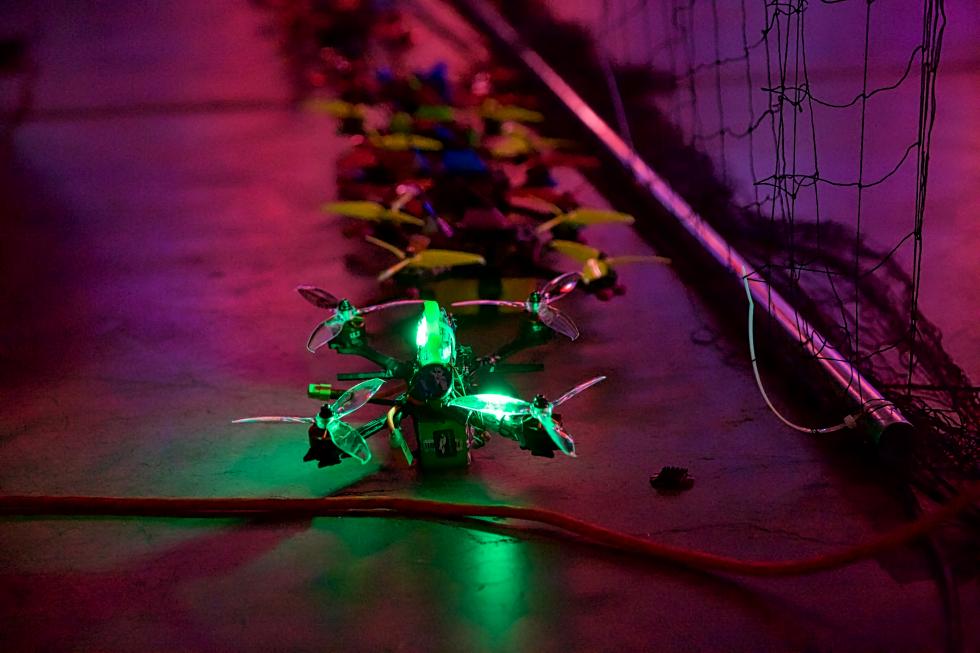
Members of second-place finisher Team Canada monitor the action
from the driver’s pit. Photos by Steve Martarano
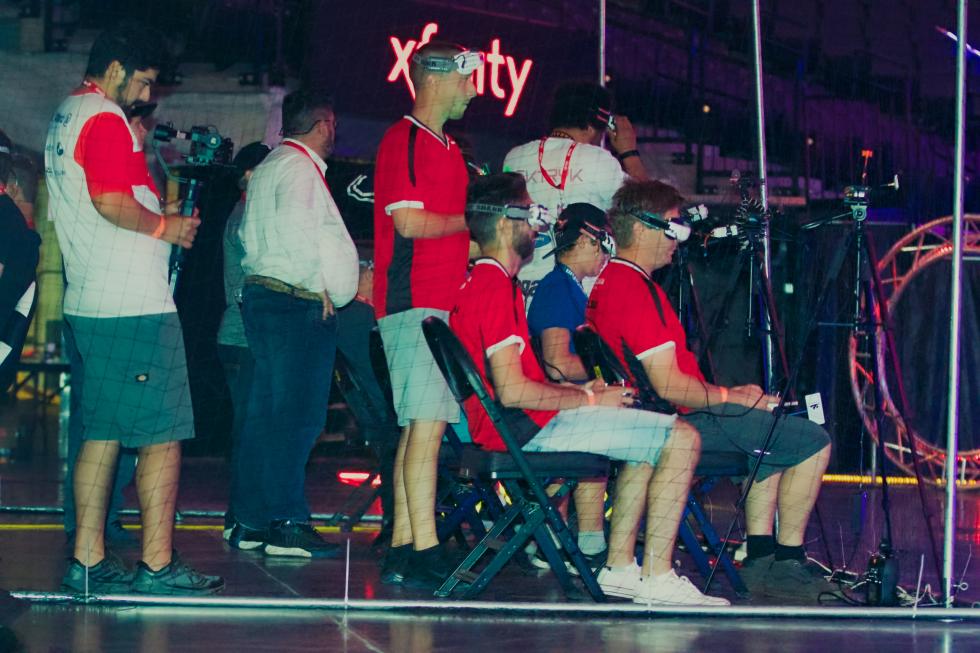
Sacramento’s Lance Ulmer at work before his first race. “There
was a whole building and engineering component I had to learn
that was tough to overcome, like learning how to solder things.”
Photos by Steve Martarano

The two youngest participants are Olaf Hichwa, 16, and Soren
Monroe-Anderson, 15. Their team, Demon Power Systems, finished
third. Photos by Steve Martarano
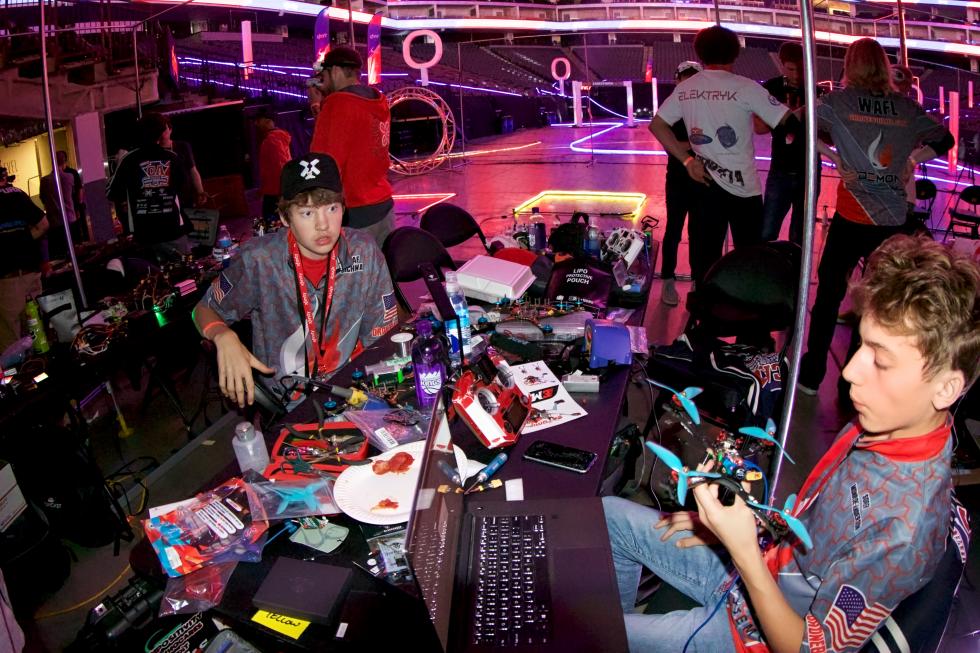
Sacramento’s Lance Ulmer’s view from the virtual cockpit. “I’m
happy with how I did. Our team goal was to be consistent and
avoid crashes. I was putting down good lap times and I didn’t
crash, so I’d call that a personal win.” Photos by Steve
Martarano
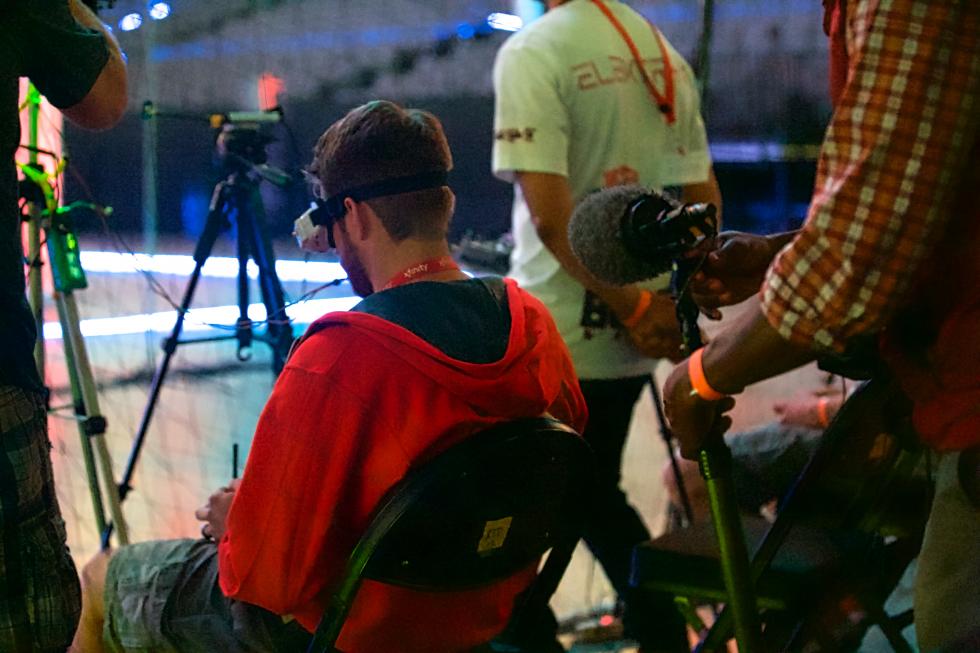
Berkay Tok and Justin Furnish of Full Send prepare one of their
drones to race. Photos by Steve Martarano
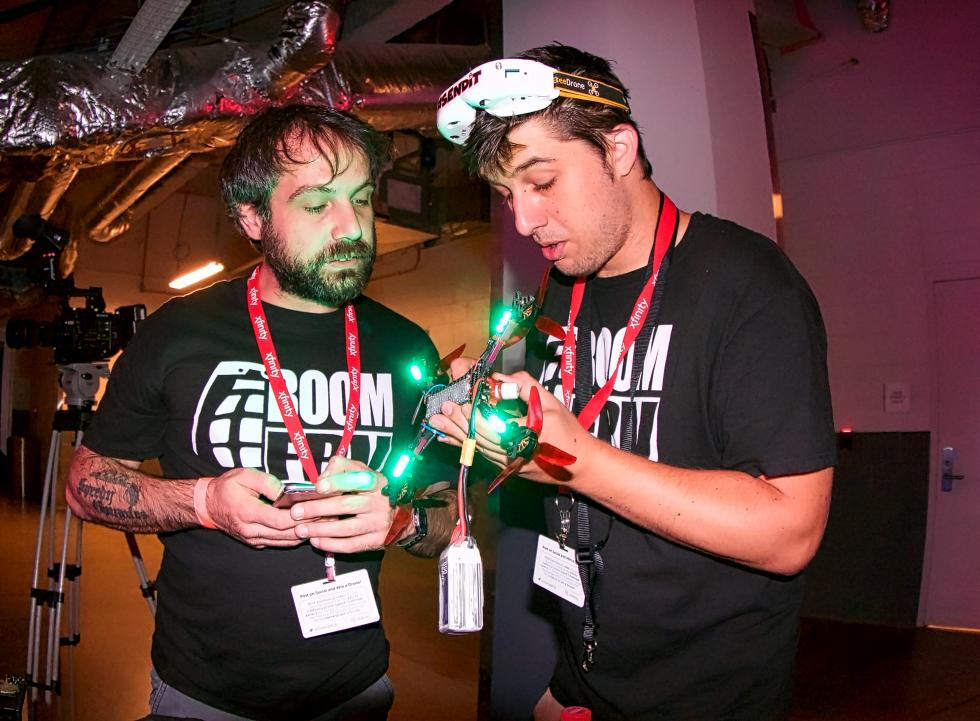
A speeding drone navigates a circular obstacle during the Xfinity
California Drone Speed Challenge at Sacramento’s Golden 1 Center.
Photos by Steve Martarano
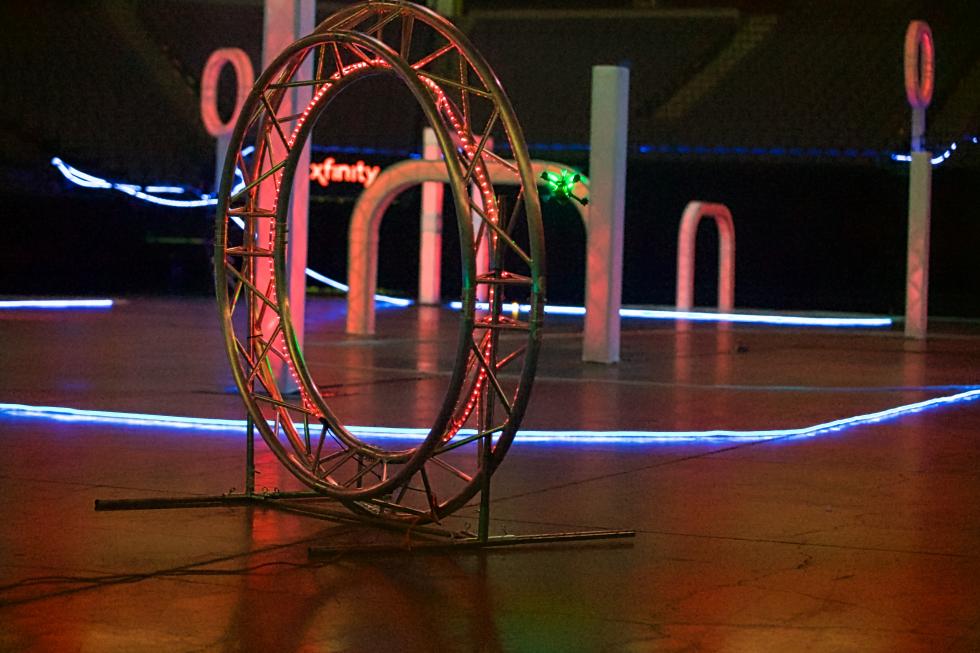
Technician Andrew Acaya and Sacramento’s Lance Ulmer tinker with
a drone prior to Team Baylands’ first race. Photos by Steve
Martarano
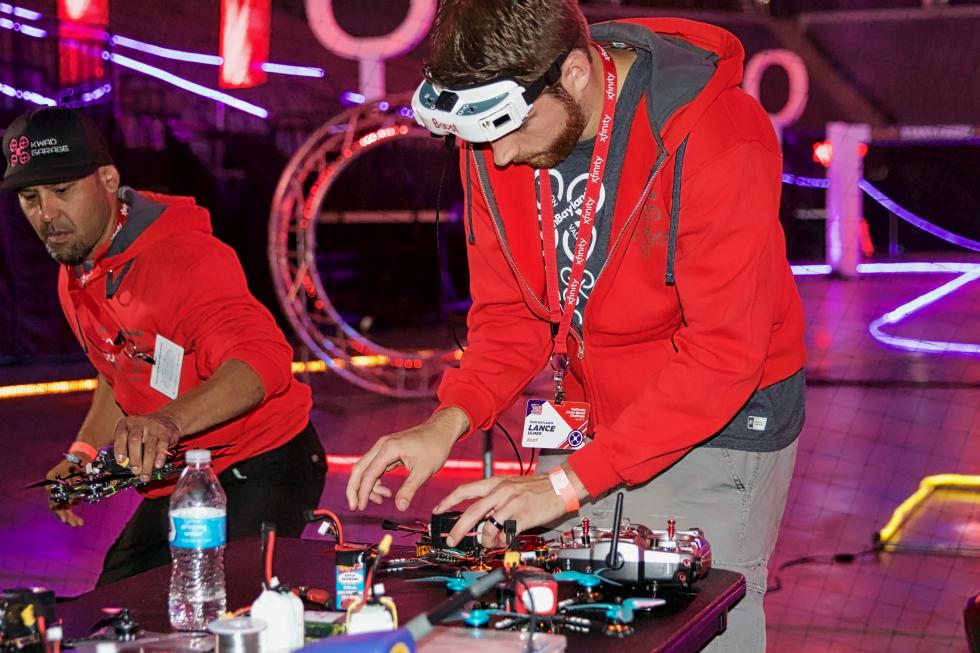
Drones come in for a pit stop on the floor of Golden 1 Center
during the Xfinity California Drone Speed Challenge. Photos by
Steve Martarano
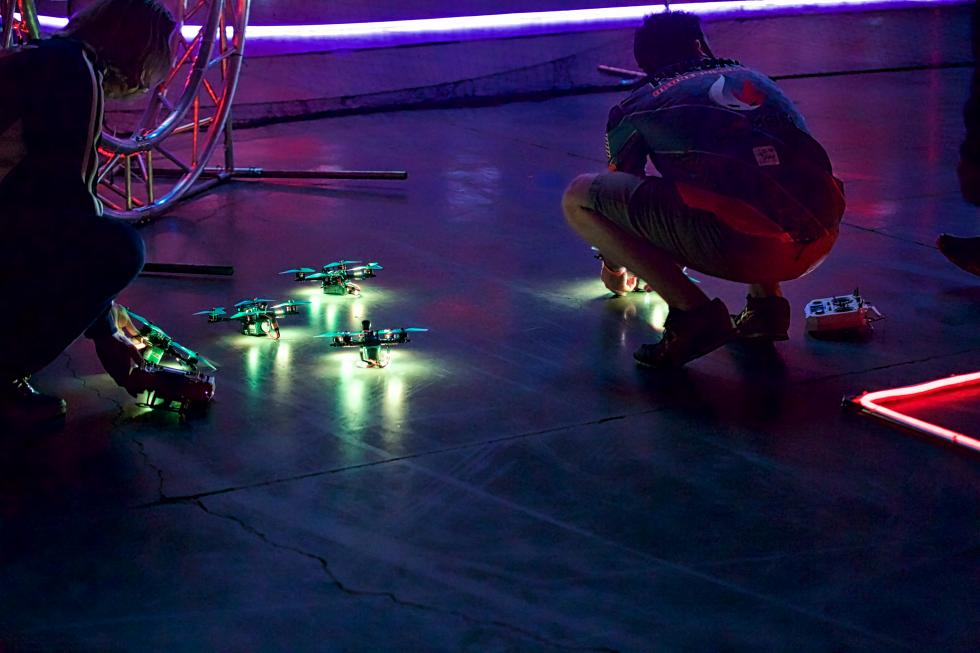
Drone pilot Lacy Morrow was among those viewing the action down
on the floor via the internet at Golden 1 Center. Photos by Steve
Martarano
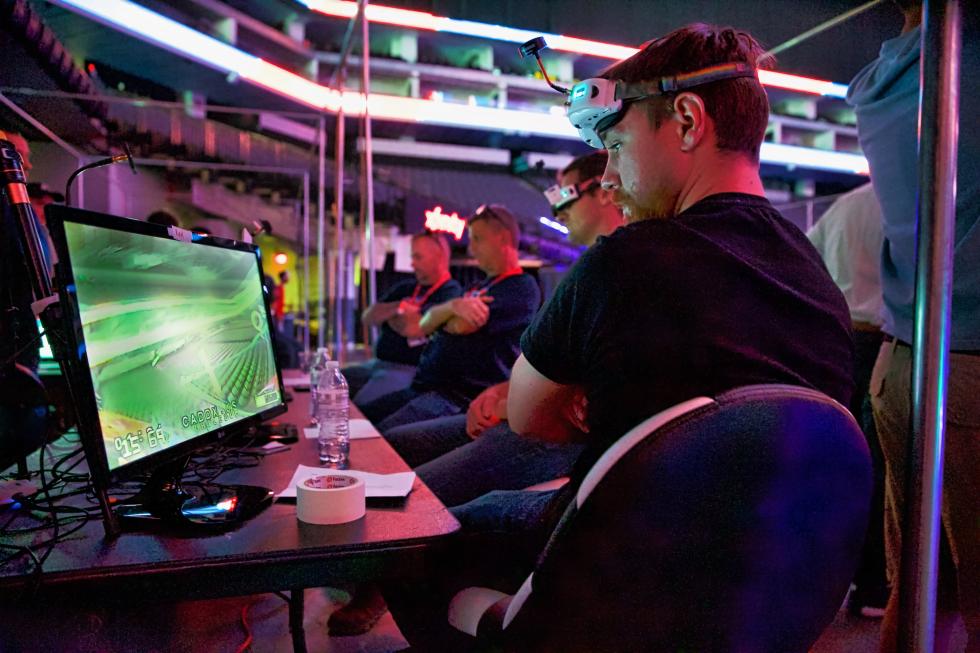
Drones race through the futuristic obstacle course during the
championship round of the Xfinity California Drone Speed
Challenge. These racing drones were built to hit speeds of up to
100 miles per hour, averaging around 80 mph for this race. Photos
by Steve Martarano
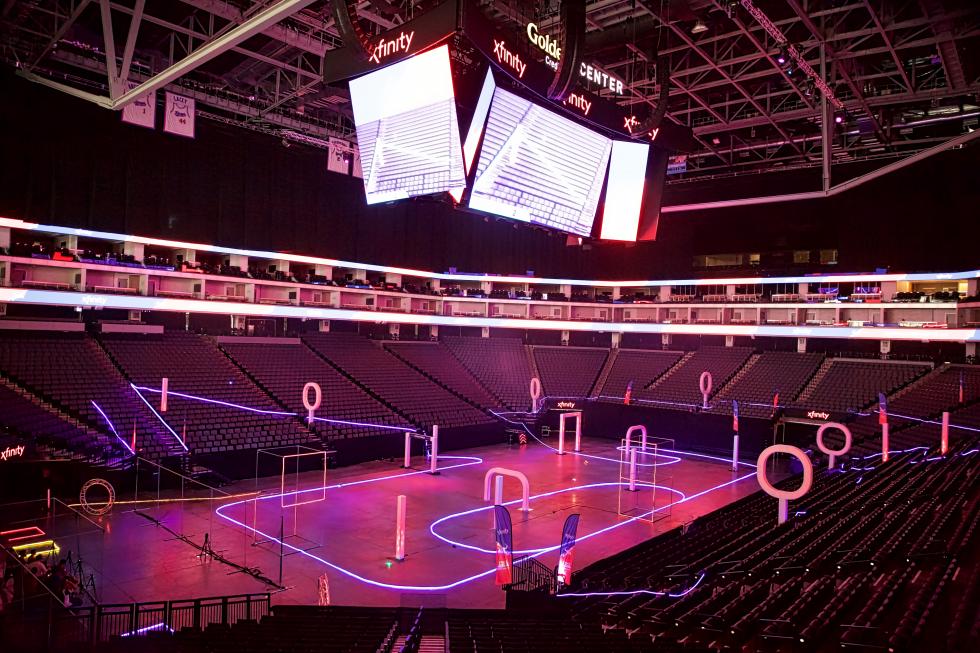
Team Elefun, with members from Sweden and Norway, celebrates its
first-place finish. The team won the biggest chunk of the $25,000
pot, about $10,000, while another $25,000 was donated to the Boys
& Girls Club of Greater Sacramento. Photos by Steve Martarano
